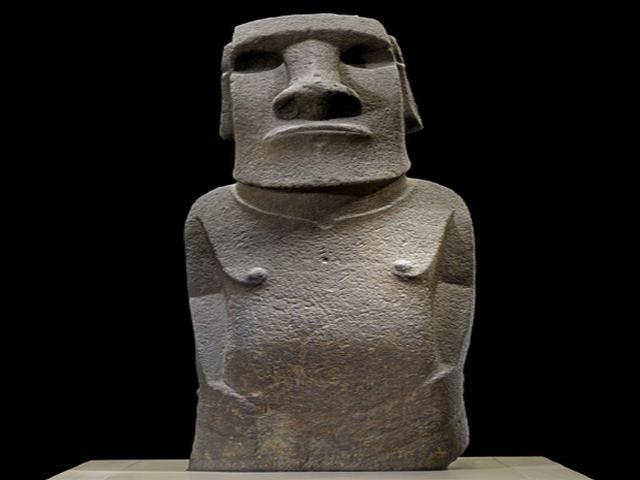Easter Island Statue

The Hoa Hakananaiʻa is a remarkable moai that stands out among the many monolithic stone statues found on Easter Island, Chile. This particular statue is made of basalt and measures an impressive two and a half meters in height, weighing a staggering four tons. The craftsmanship and attention to detail in the carving of the Hoa Hakananaiʻa are truly awe-inspiring, showcasing the skill and artistry of the Polynesian inhabitants of Rapa Nui. While the exact symbolic meaning of the moai remains a mystery, it is widely believed that these statues were created as representations of deceased ancestors, serving as vessels for their mana, or supernatural power, to be passed down to future generations.
One of the most intriguing features of the Hoa Hakananaiʻa is the intricate relief carvings that adorn its back. Added at a later, unknown time after the statue was originally carved, these carvings depict two facing 'birdmen' known as tangata manu, with stylized human figures sporting beak heads that are said to represent frigatebirds. Above these figures, at the center of the statue's head, is a smaller bird identified as a tern, or manutara. The inclusion of these bird motifs adds a layer of complexity and symbolism to the Hoa Hakananaiʻa, hinting at the rich cultural and spiritual beliefs of the Rapa Nui people.
Originally situated inside a ceremonial house in Orongo, the Hoa Hakananaiʻa has a tumultuous history that adds to its mystique. On November 7, 1868, the statue was stolen and taken aboard the English ship HMS Topaze, which eventually transported it to England. Today, the Hoa Hakananaiʻa resides in the British Museum in London, where it continues to captivate visitors with its imposing presence and enigmatic aura. As a significant cultural artifact from Easter Island, the statue serves as a tangible link to the island's past, offering insights into the beliefs, traditions, and artistic achievements of its ancient inhabitants.
Visitors to the British Museum have the opportunity to marvel at the Hoa Hakananaiʻa up close, appreciating the intricate details of its carvings and the sheer scale of its construction. The statue's imposing presence and enigmatic expression invite contemplation and reflection, prompting viewers to ponder the mysteries of Easter Island's past and the significance of the moai in its cultural heritage. Whether viewed as a work of art, a historical artifact, or a spiritual symbol, the Hoa Hakananaiʻa stands as a testament to the ingenuity and creativity of the Rapa Nui people, leaving a lasting impression on all who encounter it.
© ChatGPT 3.5